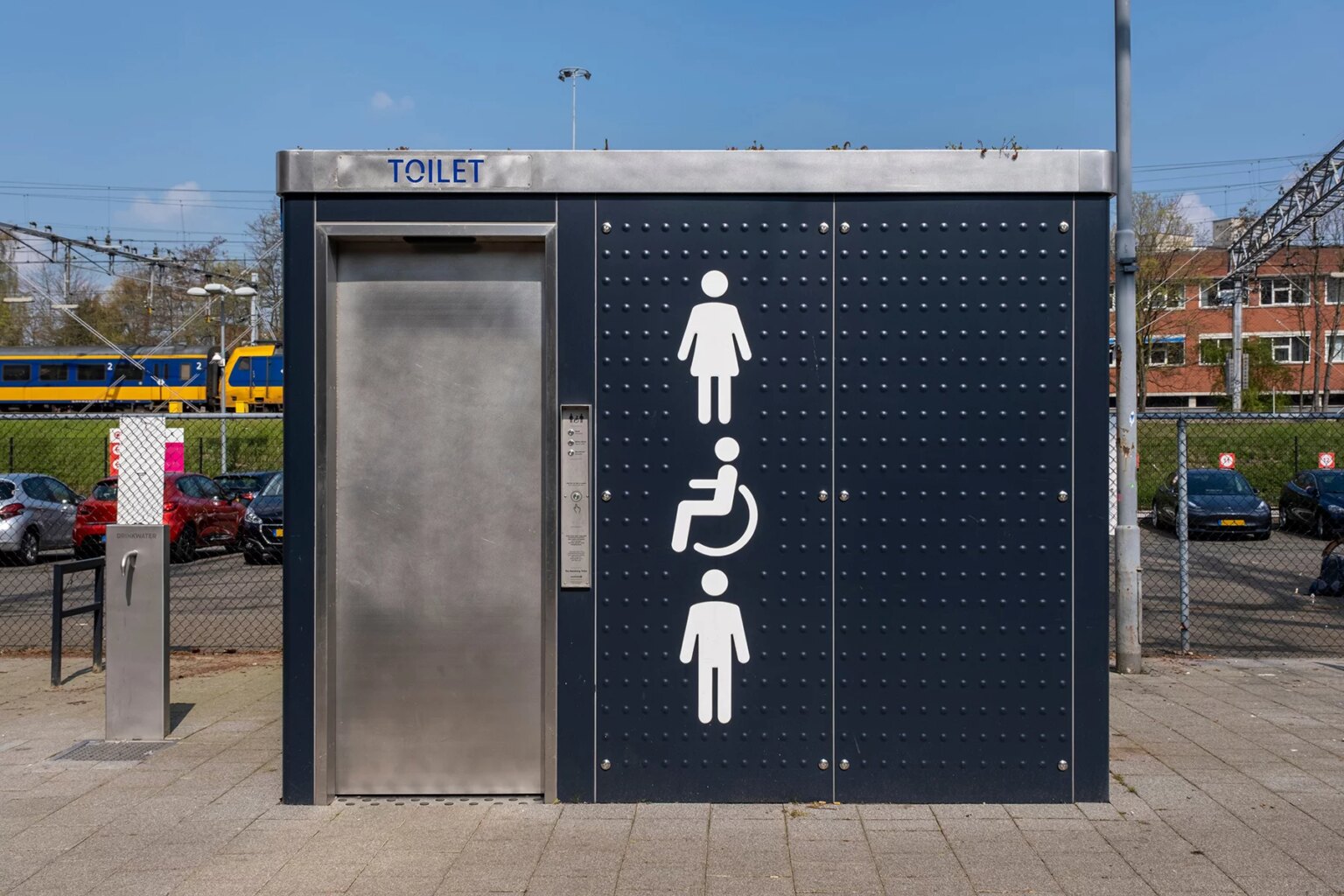You’ve just moved to the Netherlands and are getting acclimated to the language, the culture, and your new surroundings. Naturally, you’re gonna have to go. After all, you can only cross your legs and squeeze for so long.
It seems simple enough: go to the nearest toilet, do your thing, and leave (after washing your hands, of course). But, if you’ve had the pleasure of spending time in the Netherlands, you’ll know that nothing there comes easy.
Because what’s up with that weird inspection shelf? Let’s find out:
What’s so special about the Dutch toilet?
The Dutch bathroom is the smallest room known to man, the kind of size that would make an elf claustrophobic. There is just barely room to turn around and sit down. But before you awkwardly try to find a way to sit comfortably, take a look at your surroundings. It won’t take long.
You will observe four things unique to Dutch toilets (take note, because you’ll need to know this for your inburgeringstest):
- There’s either a teeny tiny window (usually shut by layers and layers of paint) or a wonky, barely working ventilation system
- The omnipresent birthday calendar, because why not put birthday reminders in the room you undoubtedly spend the most time in?
- The inspection shelf (more on this later)
- An air freshener to compensate for the bad ventilation
Very important: do not put your own name on the birthday calendar. It’s usually reserved for family and close friends only, so if you do, they’ll consider it the epitome of rudeness (yes, the irony).

The Dutch believe it is good to have options, and this ideal even applies to ways of flushing the toilet. You’ll likely see:
- A chain, rope, or string
- A button on the top or side of the toilet
- A push panel on the wall behind the toilet (one for flushing no. 1 and one for flushing no. 2)
And those are just the most frequent. Even the tanks get fancy: some above the toilet, others behind, and the occasional hidden tank.
Why are there (almost) no public bathrooms in the Netherlands?
You’re out and about when nature calls. Now what? (Tip: download the HogeNood app to find and rate Dutch toilets near you.)
In most countries, public toilets are free and available. Whether they’re clean is another thing. As it stands, most public bathrooms in the Netherlands require you to pay. While some blame entrepreneurialism (after all, the Dutch do love a money-making venture), others will point out that the cleaners have to make a wage too.
Public urinals: if you don’t mind putting on show
For the brave, there are other options that don’t involve a fee. Public urinals are popular in the lowlands, especially during festivals, parades, and fairs. The odd, hulking, four-sided booth-like plastic structures contain a small urinal – one for each of the four compartments – placed at just the right height. If you like your privacy, however, this is definitely not for you. There is nothing to shield you from passers-by.

There are a couple of versions of these public (performance?) urinals. Some are permanent fixtures within the urban landscape. Others are hidden in the ground, completely dormant, until they’re needed on King’s Day.
But one thing they’re not, and that’s for women.
Because this is wildly unfair, Dutch inventor Moon Zijp created the P-Mate (plastuit). Or, more appropriately, as they are referred to in the UK, the She-Pee. (For pictures, you can search their commercial websites).
This funnel-like contraption allows women to pee standing up without revealing anything. Now, ladies are also able to make use of public urinals or wherever else, for that matter.
How much do you have to pay for the toilet?
Dutch public toilets typically charge €0.50, though sometimes are as much as €1. It all depends on the city and location.
Back in the old days, you’d find a chair and a table guarding the bathroom. In the middle of the table, you’d see a round white plate laden with a small selection of coins. A toiletjuffrouw would be sat on the chair to make sure all guests paid their dues. A ‘toilet bouncer’ if you like. And sure, equal opportunities, but there weren’t too many toiletmeneren around.
Toilet finance etiquette dictated that you’d pay after leaving the bathroom area. When there were extreme circumstances, such as big events commanding long queues, the toilet attendant(s) wouldn’t be able to keep track of who had paid and therefore demanded payment at the entrance.

With the invention of digital money, the toiletjuffrouw soon became obsolete. While you can still find some hard-working (men but usually) women here and there, most Dutch public toilets require you to pay a machine in front before it unlocks the door.
Having to pay means they’re clean, right?
Parting with your hard-earned coin for a toilet visit should mean that the restroom area is clean and kept well-stocked with toilet paper, hand towels, and liquid soap. And for 43,6%, they are.
According to the 2023 National Toilet Survey, just under half of all public bathrooms in the Netherlands are clean. Women’s facilities tend to be cleaner than men’s (a result that may not surprise anyone who has ever walked past a men’s restroom). Around 47% of women’s and 42% of men’s bathrooms were found to be spotless.
The cleanest toilets are located in waiting rooms and corridors of hospitals, healthcare institutions, and doctor (huisarts) practices, with 60% passing the cleanliness test. Restrooms in public buildings came in second (41%), followed by those in department stores (40%). Toilets in restaurants, bars, and similar establishments were found to be the most dirty, with a meager 39% being clean.
So, what’s the shelf thing all about?
In France, toilets have more of a triangle shape, enabling human waste to go immediately out of sight. American toilets have the same idea but contain a higher level of water so things float. In the Netherlands, they have what is commonly known as the ‘inspection shelf’.
For many expats, this is the most shocking thing about the Dutch toilet. Thanks to its design, you are given the opportunity to examine your deposit before sending it down to the sewer.

The system of having a flat surface in the toilet bowl actually comes from the Germans (but don’t tell the Dutch). The flachspeuler (German for ‘flat-flusher’, i.e., the shelf design) may not be the most pleasant of toilet models, but it does have its advantages.
While some find it an appalling view, others will say it’s a practical one. Many diseases and health issues can be detected by examining stool samples. Just as you know if you’re drinking enough water by looking at the color of your urine, you can see other diet needs and surpluses by taking a peek at your poo.
Besides the health check, the design and flushing system of these toilets also saves water. Plus, they save you from being splashed with toilet water with each deposit.
There are also disadvantages to the Dutch shelf toilet, of course. Once you’re ready to say, “Tot ziens!” to your latest bowel movement, it’s not always so quick to leave. And even if you do succeed in getting everything down in one flush, it’ll leave evidence behind, as if to say, “I was here.”
(As a side note, this is a sign you have too much fat and oil in your diet.)
Unfortunately, there’s no way around it. Just don’t forget to clean up after yourself with a toilet brush. And use that air freshener, that’s what it is for.
Useful resources
- HogeNood app – find and rate Dutch toilets near you








